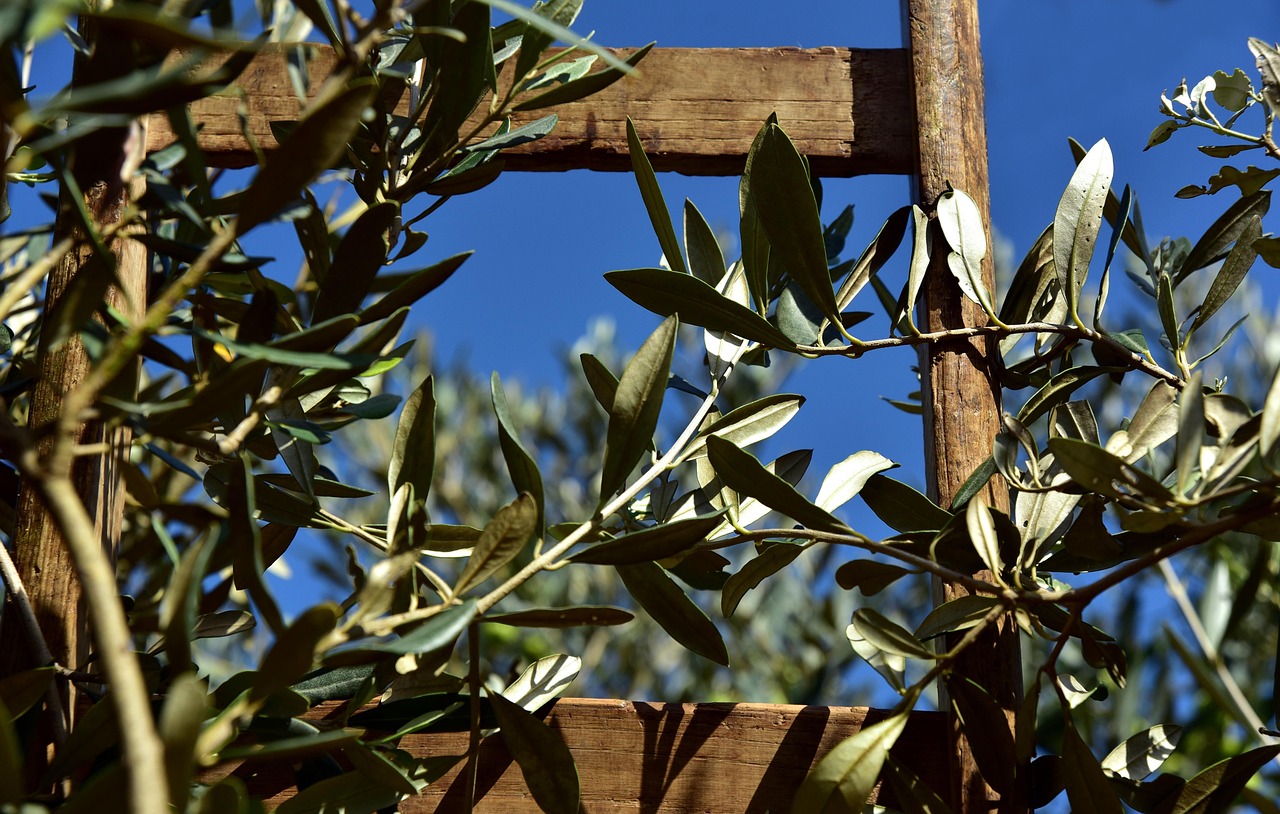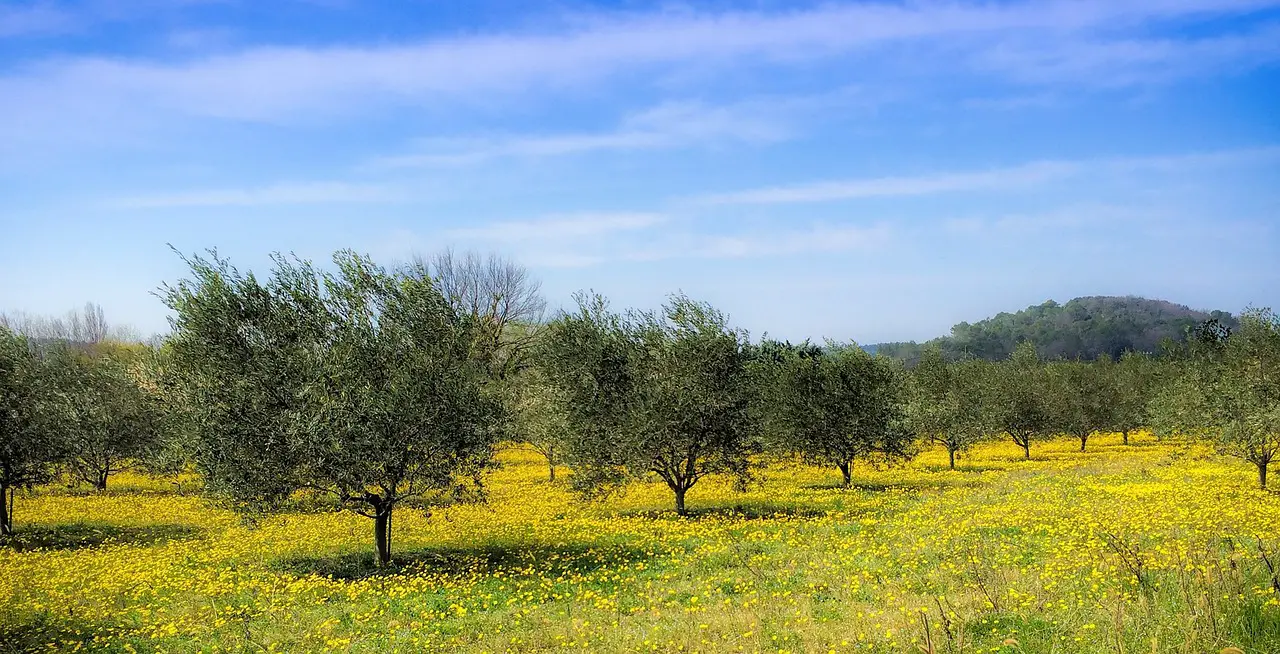Olive orchard pruning promotes biodiversity and enhances ecosystem health by encouraging diverse plant and animal life, improving soil quality, and increasing resilience to pests and diseases.
Olive orchards are not just sources of olives; they are integral ecosystems that can support a wide variety of life. The practice of pruning is essential for maintaining the health of olive trees. It also plays a significant role in fostering biodiversity within these orchards. Proper pruning techniques can help create an environment that supports various species, from beneficial insects to birds and other wildlife.

In recent years, there has been a growing awareness of the importance of biodiversity in agricultural systems. Biodiversity contributes to ecosystem stability, resilience, and productivity. In olive orchards, effective pruning can lead to healthier trees, which in turn supports a diverse range of organisms. This relationship is symbiotic; as the orchard flourishes, so does the surrounding ecosystem.
Understanding Olive Orchard Pruning
Pruning involves the selective removal of specific parts of a tree, such as branches, buds, or roots. In olive orchards, this practice is crucial for several reasons:
- Enhancing tree structure and shape
- Improving air circulation and sunlight penetration
- Facilitating easier harvesting
- Encouraging healthy growth and fruit production
When done correctly, pruning can reduce the risk of disease. It allows for better airflow and sunlight exposure throughout the tree, which can prevent fungal infections. Moreover, pruning encourages the growth of new shoots that can produce more olives. This cycle of renewal not only benefits the trees but also provides habitats for various organisms.

Benefits of Biodiversity in Olive Orchards
Encouraging biodiversity in olive orchards has numerous advantages:
- Pest Control: Diverse plant life attracts beneficial insects that prey on harmful pests.
- Soil Health: Different root systems improve soil structure and fertility.
- Pollination: A variety of flowering plants can enhance pollinator populations, leading to better yields.
- Ecosystem Resilience: Diverse systems are more resilient to environmental changes and stresses.
The interdependence between olive trees and other organisms highlights the importance of maintaining and enhancing biodiversity. For instance, birds that feed on insects can help control pest populations naturally. Likewise, native plants surrounding an olive orchard can serve as habitats for various species, further enriching the ecosystem.
Pruning Techniques for Biodiversity
There are several pruning techniques that can be employed to promote biodiversity in olive orchards. These include:

- Crown Thinning: This technique involves selectively removing branches to improve light penetration and air circulation.
- Crown Raising: Removing lower branches can create space for understory plants and improve access for wildlife.
- Crown Reduction: Reducing the height of the tree can help in managing tree size and improving fruit quality.
Implementing these techniques thoughtfully can lead to a healthier orchard ecosystem. For example, crown thinning not only benefits the olive trees but also allows more light to reach the ground, promoting the growth of wildflowers and other plants that attract pollinators.
The Role of Cover Crops
Cover crops are another important aspect of enhancing biodiversity in olive orchards. These are plants grown specifically to improve soil health and ecosystem functions. Some benefits of using cover crops include:
- Preventing soil erosion
- Suppressing weeds
- Adding organic matter to the soil
- Enhancing nutrient cycling
The introduction of cover crops can also support beneficial organisms like earthworms and microorganisms. These organisms play crucial roles in nutrient availability and soil structure, thereby promoting overall orchard health.

Examples of Suitable Cover Crops
Choosing the right cover crops is essential for maximizing benefits. Here are some suitable options:
| Cover Crop | Benefits | Growth Habit |
|---|---|---|
| Clover | Nitrogen fixation | Low-growing |
| Vetch | Nitrogen fixation; attracts pollinators | Climbing |
| Rye | Erosion control; weed suppression | Tall-growing |
| Sorghum-Sudangrass | Organic matter addition; pest suppression | Tall-growing |
The integration of cover crops with proper pruning techniques significantly enhances the biodiversity of olive orchards. These practices create a more balanced ecosystem where both the trees and surrounding wildlife can thrive together.
In summary, understanding the relationship between olive orchard pruning, biodiversity, and ecosystem health is essential for sustainable agriculture. By implementing effective pruning techniques and incorporating cover crops, orchard owners can foster healthier ecosystems that benefit both nature and productivity.
Pruning Timing and Techniques for Optimal Biodiversity
The timing of pruning is crucial for not only the health of olive trees but also for promoting biodiversity. Different pruning techniques can be applied at various times throughout the year, influencing the orchard’s ecological dynamics. Understanding these timings can help orchard managers enhance both productivity and ecosystem health.
Seasonal Pruning Considerations
Pruning can be categorized into several seasonal approaches:
- Winter Pruning: This is typically done when the tree is dormant. It helps shape the tree and promotes healthy growth in the spring. Winter pruning can minimize stress on the tree and reduce the risk of disease transmission.
- Summer Pruning: Conducted during the growing season, summer pruning can help control tree size and improve light penetration. This method can enhance fruit quality and support beneficial insects by maintaining a diverse canopy.
- Post-Harvest Pruning: After the harvest, minor adjustments can be made to manage any damage caused during harvesting. This timing can also help prepare the trees for the next growing season.
Choosing the right time for pruning not only supports tree health but also allows for the optimal interaction with other organisms in the ecosystem. For example, winter pruning minimizes exposure to pests that are more active in warmer months.
Pruning Techniques to Enhance Biodiversity
Several specific pruning techniques can further enhance biodiversity within olive orchards:
- Selective Pruning: This involves removing specific branches based on their health and position, promoting a balanced structure that allows light and air to circulate effectively.
- Pollarding: This technique entails cutting back branches to promote new growth. It can lead to a denser canopy that offers shelter for various wildlife species.
- Espalier: Training trees to grow flat against a support structure can increase sunlight exposure and provide an attractive habitat for birds and beneficial insects.
Implementing these techniques thoughtfully can create a microclimate that supports multiple species, enhancing the overall biodiversity of the orchard.
Integrating Native Plants into Olive Orchards
The incorporation of native plants into olive orchards is another effective strategy for promoting biodiversity. Native plants are adapted to local conditions and require less maintenance, making them ideal companions for olive trees. They provide food and habitat for native wildlife, including pollinators and beneficial insects.
Benefits of Native Plants
Utilizing native plants in olive orchards offers several important benefits:
- Improved Soil Health: Native plants can enhance nutrient cycling and soil structure by promoting a diverse root system.
- Attracting Pollinators: Many native flowering plants are vital for attracting bees, butterflies, and other pollinators, which are essential for fruit set.
- Pest Management: Native plants can harbor beneficial insects that prey on common pests found in olive orchards.
The selection of appropriate native plant species is essential. Some examples include:
| Native Plant | Benefits | Flowering Season |
|---|---|---|
| Echinacea (Coneflower) | Attracts pollinators; drought-resistant | Summer |
| Lobelia | Supports hummingbirds; pest deterrent | Summer |
| Aster | Late-season nectar source; attracts butterflies | Fall |
| Milkweed | Caterpillar host plant for monarchs; pest attraction | Summer |
Integrating these native plants into olive orchards creates a more diverse ecosystem. This enhances not only the orchard’s resilience but also its productivity.
The Role of Organic Practices in Pruning and Biodiversity
The adoption of organic farming practices complements pruning techniques and biodiversity efforts. Organic methods prioritize natural solutions over synthetic chemicals, promoting healthier ecosystems. These practices not only benefit the olive trees but also support the surrounding flora and fauna.
Benefits of Organic Practices
Implementing organic practices in olive orchards leads to several advantages:
- Pest Management: Natural pest control measures, such as introducing beneficial insects or using organic pesticides, reduce chemical exposure and promote a balanced ecosystem.
- Soil Fertility: Organic fertilizers improve soil health without harming beneficial microorganisms, enhancing nutrient availability for plants.
- Biodiversity Enhancement: Organic practices encourage a variety of plant and animal life, leading to more robust ecosystems.
The combination of organic practices with effective pruning techniques creates a synergistic effect that fosters both tree health and biodiversity. This holistic approach ensures that olive orchards thrive as sustainable ecosystems capable of withstanding environmental stresses.
The integration of these strategies—pruning timing, native plants, and organic practices—can transform olive orchards into vibrant ecosystems. By focusing on these elements, orchard managers can significantly enhance both biodiversity and ecosystem health.
Monitoring and Assessing Biodiversity in Olive Orchards
To effectively promote biodiversity in olive orchards, it is essential to monitor and assess the ecological health of these systems regularly. This process involves evaluating the presence and abundance of various species, including plants, insects, birds, and soil organisms. Such assessments enable orchard managers to make informed decisions regarding management practices.
Key Indicators of Biodiversity
Several key indicators can be used to assess the biodiversity of olive orchards:
- Species Richness: The variety of different species found within the orchard ecosystem is a primary measure of biodiversity. Higher species richness typically indicates a healthier ecosystem.
- Population Density: Monitoring the number of individuals per species can provide insights into the health of specific populations and their interactions.
- Functional Diversity: This refers to the variety of functions that different species perform within the ecosystem, such as pollination, soil aeration, and pest control.
By focusing on these indicators, orchard managers can gain valuable insights into the overall health of their olive orchards. Regular assessments can help identify areas that require improvement or specific interventions.
Methods for Monitoring Biodiversity
Several effective methods can be employed to monitor biodiversity in olive orchards:
- Field Surveys: Conducting regular field surveys allows for direct observation and recording of species present in the orchard. This method can involve visual counts, trapping, or sampling.
- Remote Sensing: Utilizing technology such as drones or satellite imagery can provide valuable data on vegetation cover and landscape changes over time.
- Citizen Science: Engaging local communities and volunteers in biodiversity monitoring can enhance data collection efforts. This approach often increases awareness and appreciation for local ecosystems.
Implementing a combination of these methods can provide a comprehensive understanding of biodiversity within olive orchards. This information is crucial for informed decision-making and adaptive management strategies.
The Impact of Climate Change on Olive Orchards
Climate change poses significant challenges to agricultural systems, including olive orchards. Understanding its impact is essential for developing strategies that foster resilience and sustainability. Changes in temperature, precipitation patterns, and extreme weather events can affect both tree health and biodiversity.
Effects of Climate Change on Olive Trees
Several key effects of climate change on olive trees include:
- Altered Growth Patterns: Changes in temperature can influence the growing season, affecting flowering and fruit set. This may lead to reduced yields or inconsistent harvests.
- Pest and Disease Pressure: Warmer temperatures may expand the range of certain pests and diseases, making olive trees more vulnerable. Increased humidity can also promote fungal diseases.
- Water Availability: Changes in precipitation patterns can lead to drought or excessive rainfall, both of which can stress trees and impact overall health.
The interconnectedness of these factors highlights the need for proactive management strategies to mitigate climate change impacts on olive orchards.
Strategies for Mitigating Climate Change Impacts
Several strategies can be employed to enhance resilience against climate change effects:
- Diversity in Planting: Introducing a variety of olive cultivars can help buffer against climate-related risks. Different cultivars may respond differently to environmental stresses.
- Soil Health Management: Practices that enhance soil health, such as cover cropping and organic amendments, can improve water retention and nutrient availability, helping trees withstand stress.
- Water Conservation Techniques: Implementing efficient irrigation systems and rainwater harvesting can ensure that trees have access to water during dry periods.
By adopting these strategies, orchard managers can improve the resilience of their olive orchards against the challenges posed by climate change while also supporting biodiversity.
The Role of Education and Community Engagement
Education and community engagement play vital roles in promoting biodiversity and ecosystem health in olive orchards. Involving local communities fosters a sense of stewardship and encourages sustainable practices among all stakeholders.
Educational Initiatives
Various educational initiatives can be implemented to raise awareness about biodiversity in olive orchards:
- Workshops and Training Sessions: Organizing workshops that teach best practices for pruning, pest management, and biodiversity enhancement can empower orchard managers.
- School Programs: Collaborating with local schools to create programs focused on agriculture and ecology helps educate younger generations about the importance of biodiversity.
- Field Days: Hosting events where community members can visit orchards and learn directly from growers about their practices promotes transparency and fosters community support.
Engaging local communities not only enhances knowledge but also builds a network of support for sustainable agricultural practices.
Collaborative Efforts for Biodiversity Conservation
Collaboration among different stakeholders is vital for achieving long-term biodiversity goals. This includes partnerships between farmers, researchers, conservation organizations, and governmental agencies. Such collaborations can lead to resource sharing, knowledge exchange, and innovative solutions.
The combined efforts of various stakeholders can significantly enhance the effectiveness of biodiversity initiatives within olive orchards. By fostering a culture of collaboration, it becomes possible to create sustainable systems that benefit both agriculture and the environment.
Incorporating education and community engagement into olive orchard management practices ensures that biodiversity remains a priority. These efforts contribute to healthier ecosystems and more resilient agricultural systems, benefiting everyone involved.
Challenges and Future Directions for Olive Orchard Biodiversity
While the benefits of promoting biodiversity in olive orchards are clear, several challenges remain. Understanding these challenges is crucial for developing effective strategies to overcome them and ensure the sustainability of olive farming.
Challenges to Biodiversity in Olive Orchards
Some of the primary challenges include:
- Intensive Agricultural Practices: Conventional farming methods often prioritize high yields and can lead to monocultures, which reduce biodiversity. This practice can harm beneficial organisms and degrade soil health.
- Pesticide Use: The reliance on chemical pesticides can negatively impact non-target species, including beneficial insects and pollinators, leading to imbalances in the ecosystem.
- Climate Change: As previously mentioned, climate change introduces new stresses that can affect tree health and biodiversity. Altered weather patterns can disrupt established ecosystems.
- Land Use Changes: Urbanization and land conversion for other agricultural purposes can fragment habitats, making it difficult for wildlife to thrive.
Addressing these challenges requires a multifaceted approach that involves education, collaboration, and innovative practices aimed at enhancing ecological health.
Future Directions for Sustainable Practices
Looking ahead, several key strategies can help mitigate challenges and enhance biodiversity within olive orchards:
- Adopting Agroecological Practices: Embracing agroecology can promote sustainable farming that integrates ecological principles with agricultural practices. This approach emphasizes biodiversity, soil health, and natural pest control.
- Investing in Research: Continued research into sustainable practices, pest management, and biodiversity conservation is essential. Investments in innovation can lead to new methods that benefit both farmers and ecosystems.
- Utilizing Technology: Advances in technology can aid in monitoring biodiversity and managing orchards more effectively. Tools such as precision agriculture can optimize resource use while preserving ecological balance.
- Building Community Networks: Strengthening local networks of farmers, researchers, and conservationists can facilitate knowledge sharing and collaborative projects aimed at enhancing biodiversity.
By focusing on these future directions, olive orchard management can evolve into a more sustainable practice that prioritizes ecological health alongside productivity.
Conclusion
The relationship between olive orchard pruning, biodiversity, and ecosystem health is integral to sustainable agriculture. Effective pruning techniques not only enhance the health and productivity of olive trees but also foster a diverse ecosystem that benefits various species. Implementing practices such as cover cropping, integrating native plants, and adopting organic methods significantly contribute to the resilience of these orchards.
Monitoring biodiversity through regular assessments and engaging communities through education is crucial for long-term success. Collaborative efforts among stakeholders further enhance the effectiveness of biodiversity initiatives, creating a more robust agricultural system capable of adapting to challenges such as climate change.
As we move forward, it is vital to continue exploring innovative strategies that promote the health of both olive orchards and surrounding ecosystems. By prioritizing biodiversity, we not only support sustainable agriculture but also contribute to the overall health of our planet.
In summary, the journey toward enhancing biodiversity in olive orchards is multifaceted. It requires commitment from farmers, researchers, and communities alike. Together, we can create thriving ecosystems that sustain both agricultural productivity and the natural environment for generations to come.
